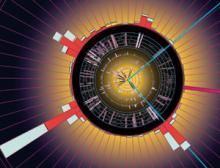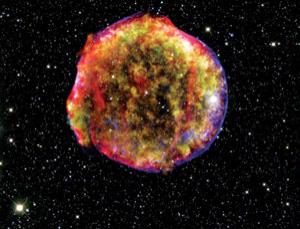LATEST HEADLINES
Wanted: little levers to probe the quantum divide
THIS WEEK: 17:58 08 July 2010 | 12 comments
We could probe the boundaries of the divide between the quantum and everyday-scale worlds by "entangling" two simple, tiny levers
Glooped-up desk toy probes weird wet collisions

IN BRIEF: 13:16 08 July 2010 | 1 comment
An oil-soaked version of Newton's cradle could help improve air filtration technology and medicine production
Gamma rays may betray clumps of dark matter
IN BRIEF: 12:00 04 July 2010 | 2 comments
Solar-system-sized remnants of dark matter that formed in the early universe could be littering our galaxy and emitting gamma rays


















